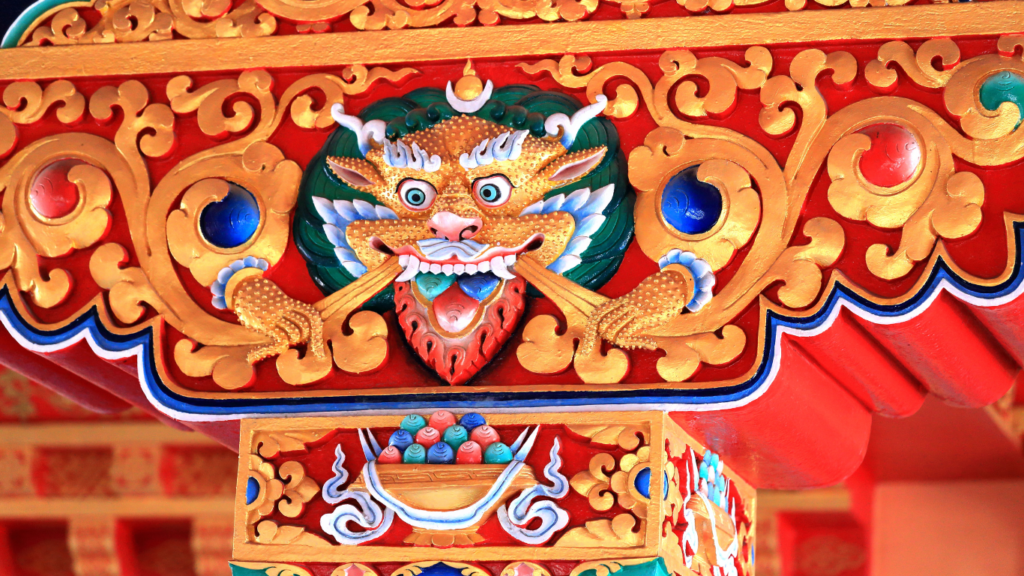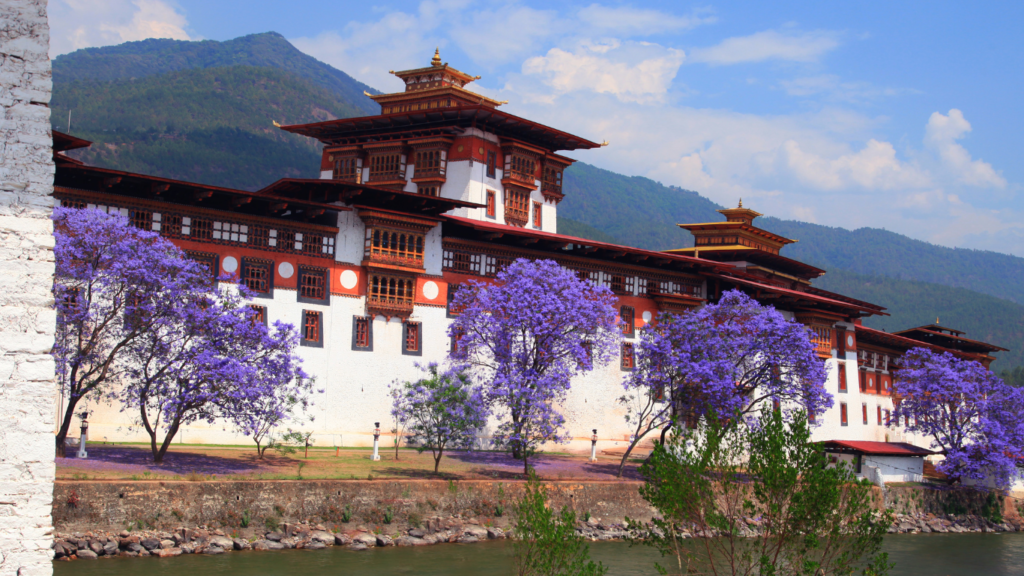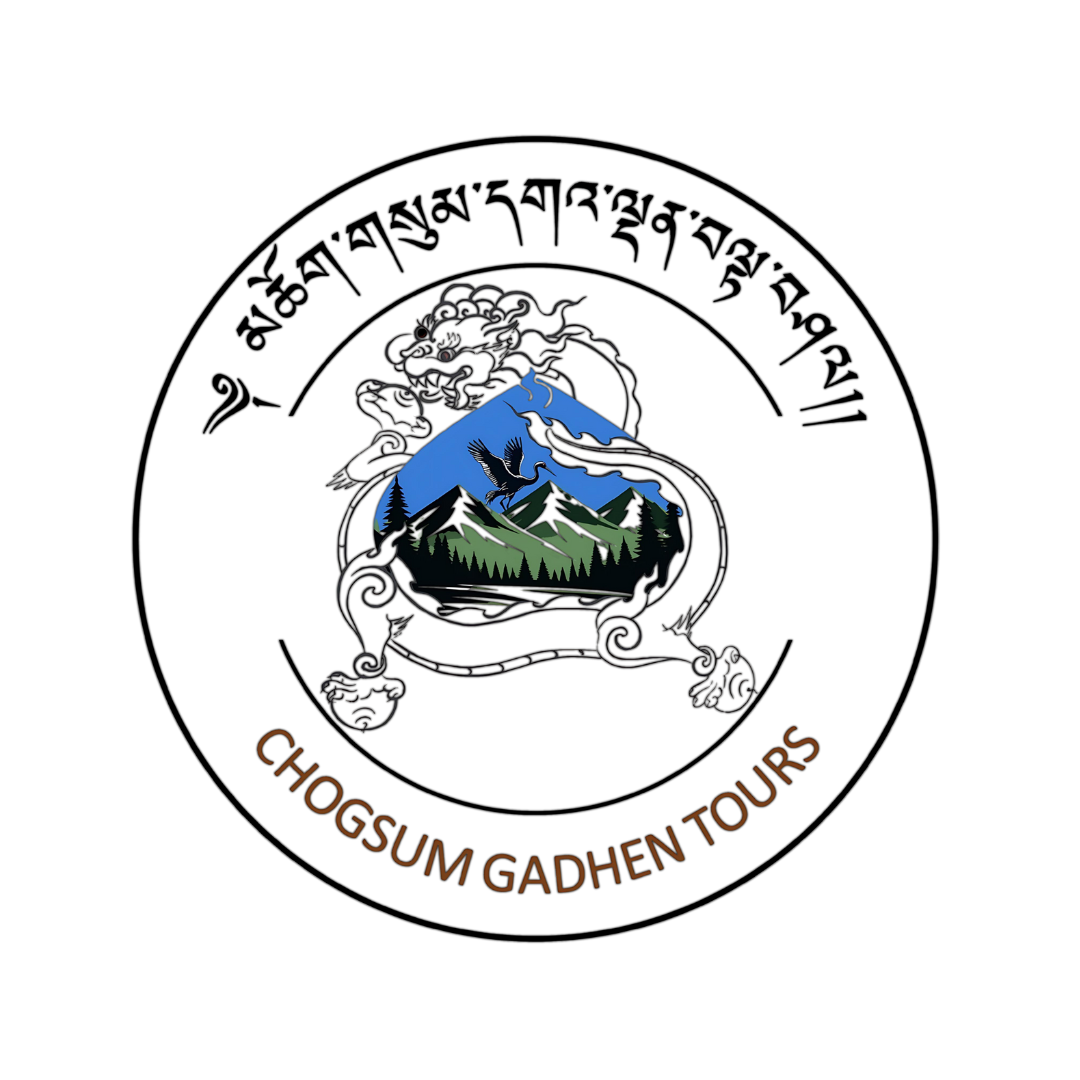Call Us:+975-17615031
The Magnificent Punakha Dzong: Bhutan’s Architectural Jewel
In the fertile valley where the Mo Chhu and Pho Chhu rivers converge, stands one of Bhutan’s most enchanting and historically significant structures—Punakha Dzong. Known as the “Palace of Great Happiness,” this magnificent fortress is a testament to Bhutanese architecture and a cornerstone of the nation’s spiritual and political history.
A Historical Legacy

Punakha Dzong was constructed in 1637 by Zhabdrung Ngawang Namgyal, the unifier of Bhutan, after a prophetic vision indicated the precise location for its establishment. Built at the juncture of two rivers, it was strategically placed to symbolize the unity of secular and spiritual power in Bhutan.
The dzong served as the administrative center and the seat of the government until the capital was moved to Thimphu in the 1950s. It also held a pivotal role as the winter residence of the Je Khenpo (Chief Abbot) and the central monastic body, a tradition that continues to this day.
Architectural Grandeur
Punakha Dzong is renowned for its impressive size and elaborate design. The fortress stretches across a length of 180 meters and a width of 72 meters, making it one of the largest dzongs in Bhutan. Its towering whitewashed walls, embellished with intricate woodwork and gold details, reflect the brilliance of Bhutanese craftsmanship.
The dzong is a masterpiece of traditional Bhutanese architecture, constructed without the use of nails. It features three courtyards: the southern courtyard houses the administrative offices, the middle courtyard serves as the monks’ living quarters, and the northern courtyard contains the temple and religious halls.
The central utse, or tower, is the focal point of Punakha Dzong, soaring above the complex with grace and authority. This grand structure is surrounded by lush gardens and blooming jacaranda trees, which enhance its picturesque beauty, particularly in spring.
Cultural and Spiritual Significance
Punakha Dzong is not only a marvel of architecture but also a vital religious site. It houses sacred relics and the embalmed body of Zhabdrung Ngawang Namgyal. The dzong is also the setting for significant national events, including the coronation of Bhutanese kings and the royal wedding ceremonies.
One of the most important annual events held at Punakha Dzong is the Punakha Drubchen. This festival commemorates the victory over Tibetan invaders in the 17th century and features vivid reenactments of historical battles. Another major event is the Punakha Tshechu, a religious festival that includes traditional mask dances, music, and rituals, attracting devotees and tourists alike.
The Sacred Relic: The Rangjung Kharsapani
Within the sacred halls of Punakha Dzong lies the Rangjung Kharsapani, a precious relic believed to be a self-created image of Avalokiteshvara, the Buddha of Compassion. This relic is of immense spiritual significance and is displayed to the public only during the Punakha Drubchen festival, drawing pilgrims from across the country.
A Symbol of Resilience
Throughout its history, Punakha Dzong has faced numerous challenges, including fires, floods, and earthquakes. Despite these adversities, the fortress has been meticulously restored each time, demonstrating the resilience and dedication of the Bhutanese people to preserve their cultural heritage.
The most recent restoration, completed in the early 2000s, was initiated under the auspices of the present King of Bhutan, Jigme Khesar Namgyel Wangchuck. This restoration effort not only repaired the structural damages but also enhanced the dzong’s beauty and functionality, ensuring its preservation for future generations.
A Living Heritage
Today, Punakha Dzong continues to be a vibrant center of religious and administrative activities. Visitors to the dzong are often awestruck by its grandeur and the serene ambiance that pervades the complex. The tranquil setting, with the murmuring rivers and the majestic mountains in the backdrop, creates a profound sense of peace and reverence.
Walking through the ancient corridors and courtyards of Punakha Dzong, one can almost feel the echoes of Bhutan’s past and the enduring spirit of its people. It is a place where history, culture, and spirituality converge, offering a unique glimpse into the heart of Bhutanese identity.
Whether you are attending a festival, exploring its sacred temples, or simply admiring its architectural splendor, a visit to Punakha Dzong is an unforgettable experience. It stands as a beacon of Bhutan’s glorious past and a symbol of the nation’s unwavering faith and resilience.






